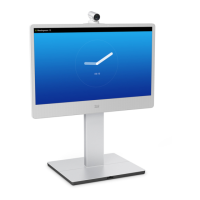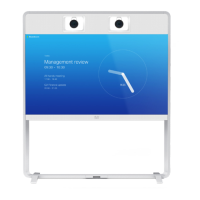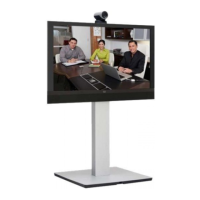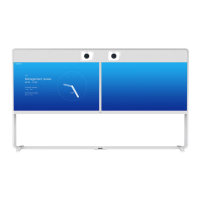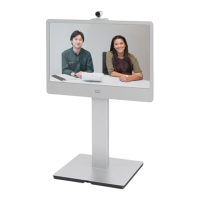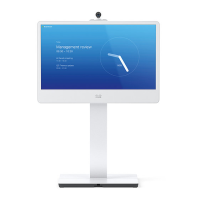Configure H.323 and SIP
(When not set by a provisioning system)
To get online and ready to place and receive calls, your system
must be set up properly. Your system uses either the H.323
protocol or the SIP protocol for video calls.
The diagnostics on your system will indicate if there is a
problem with H.323 or SIP registering.
If you wish to change the other H.323 or SIP settings, see the
administrator guide for your product.
For networks administered through Cisco TMS (Cisco
TelePresence Management Suite), your Cisco TMS adminis-
trator will help you to get online.
You can find information about administering through Cisco
UCM in the Administering CE endpoints on CUCM guide.
NOTE: H.323 is not available for the SX10.
H.323
If in doubt for any of the parameters below, contact your system
administrator or your service provider.
1. Go to the Setup tab, and select Configuration.
2. Open the H323 settings from the left sidebar.
3.
Under the H323Alias heading enter the E164 and the ID
number in the corresponding input fields.
4.
Enter the Gatekeeper Address in the corresponding input
field.
5.
If the H.323 gatekeeper requires authentication, and you
want your system to authenticate itself to the gatekeeper,
go to the Authentication subheading and select On in
the Mode drop down list. Then enter the LoginName and
Password in the corresponding input fields.
Otherwise, select Off in the Mode drop down list.
SIP
If in doubt for any of the parameters below, contact your system
administrator or your service provider.
1. Go to the Setup tab, and select Configuration.
2. Open the SIP settings from the left sidebar.
3.
Enter the SIP URI in the URI input field, and optionally a
display name in the DisplayName input field.
4.
Select the preferred transport protocol from the
DefaultTransport drop down list. If you select Auto, the
system first tries to connect using Tls, then TCP, and finally
U D P.
5.
Select a proxy type in the Type drop down list. The default
type is Standard. You can use Cisco when registering to
CUCM.
6. Enter the Proxy 1 Address in the corresponding input field
7.
If the SIP proxy requires authentication, you must enter a
login name and password to authenticate your system. Go
to the Authentication heading and enter the LoginName and
Password in the corresponding input fields.
If you are changing a value setting,
you have to always click save to confirm the change.
Cisco TelePresence Video Systems
D15318.02 Video Systems Getting Started Guide CE8.1, APRIL 2016. Copyright © 2016 Cisco Systems, Inc. All rights reserved. 16
Getting Started Guide
On-screen setup assistant
